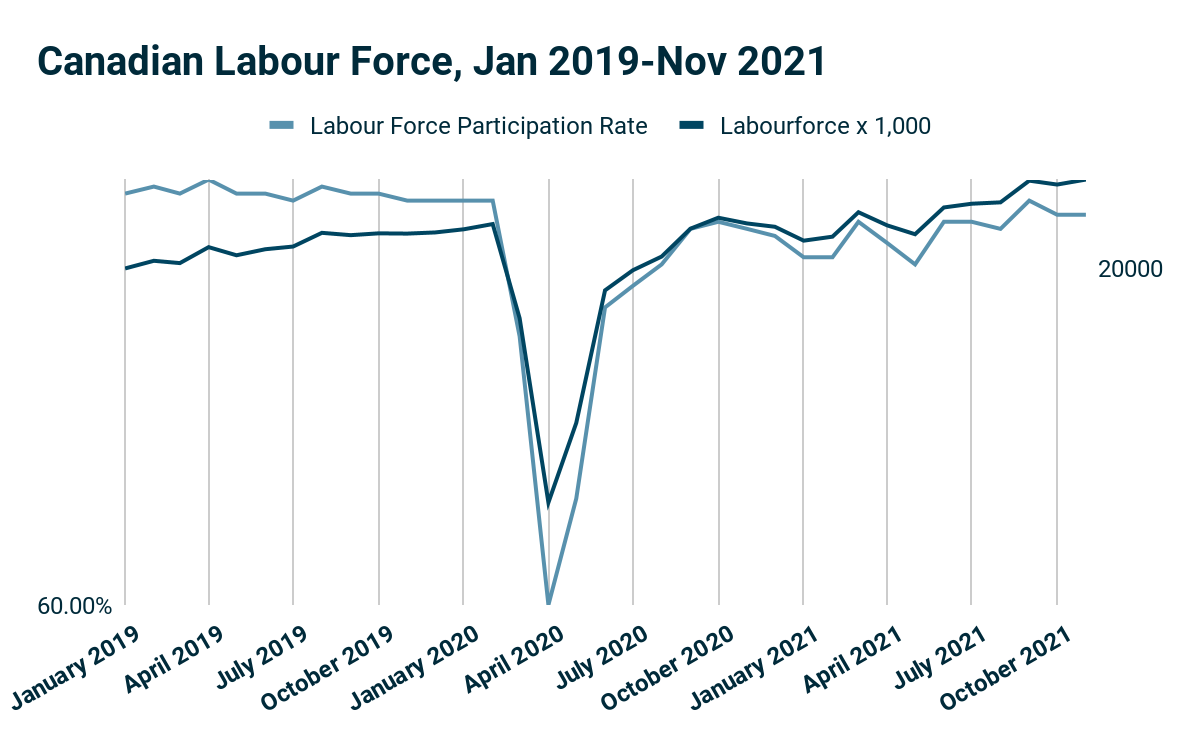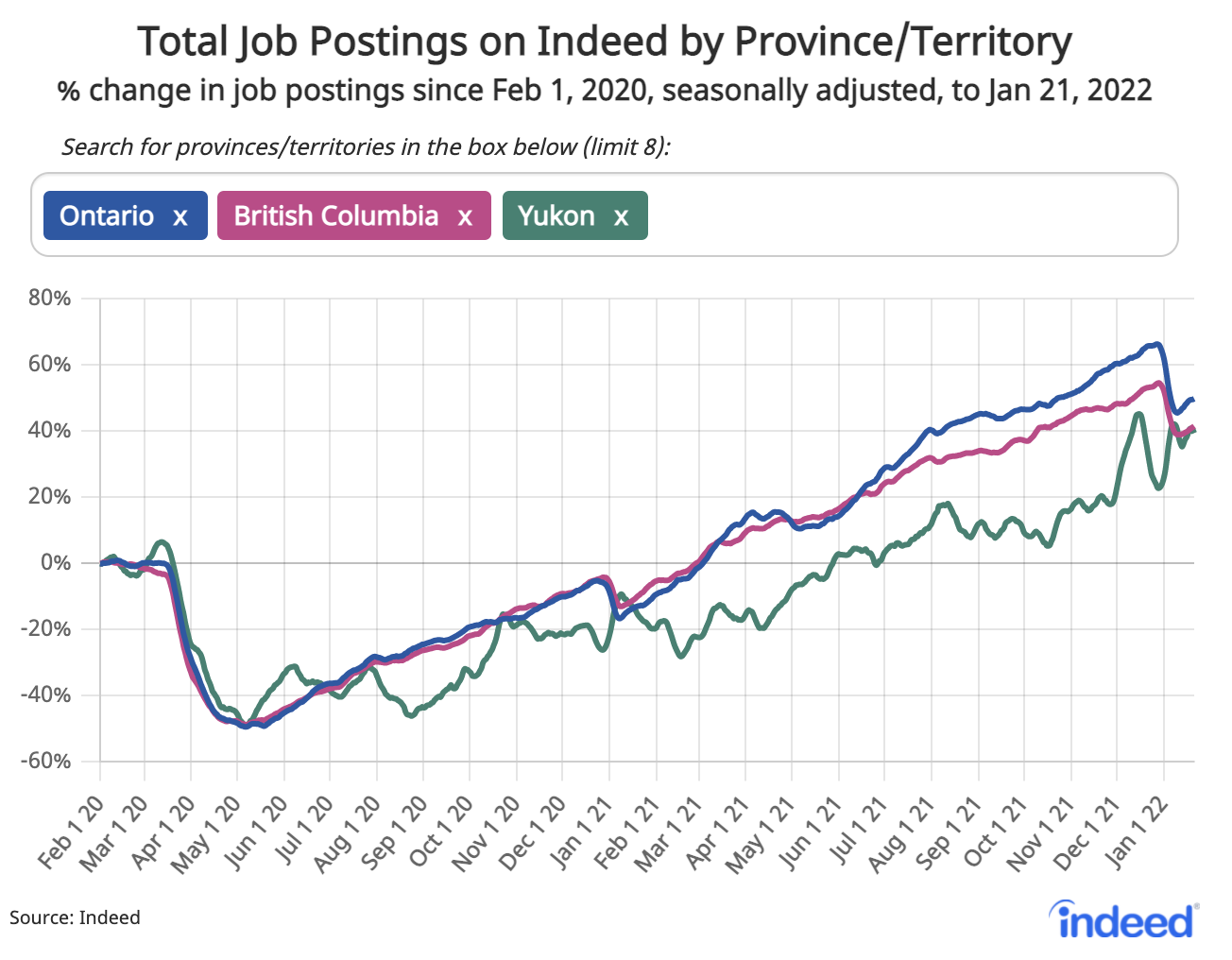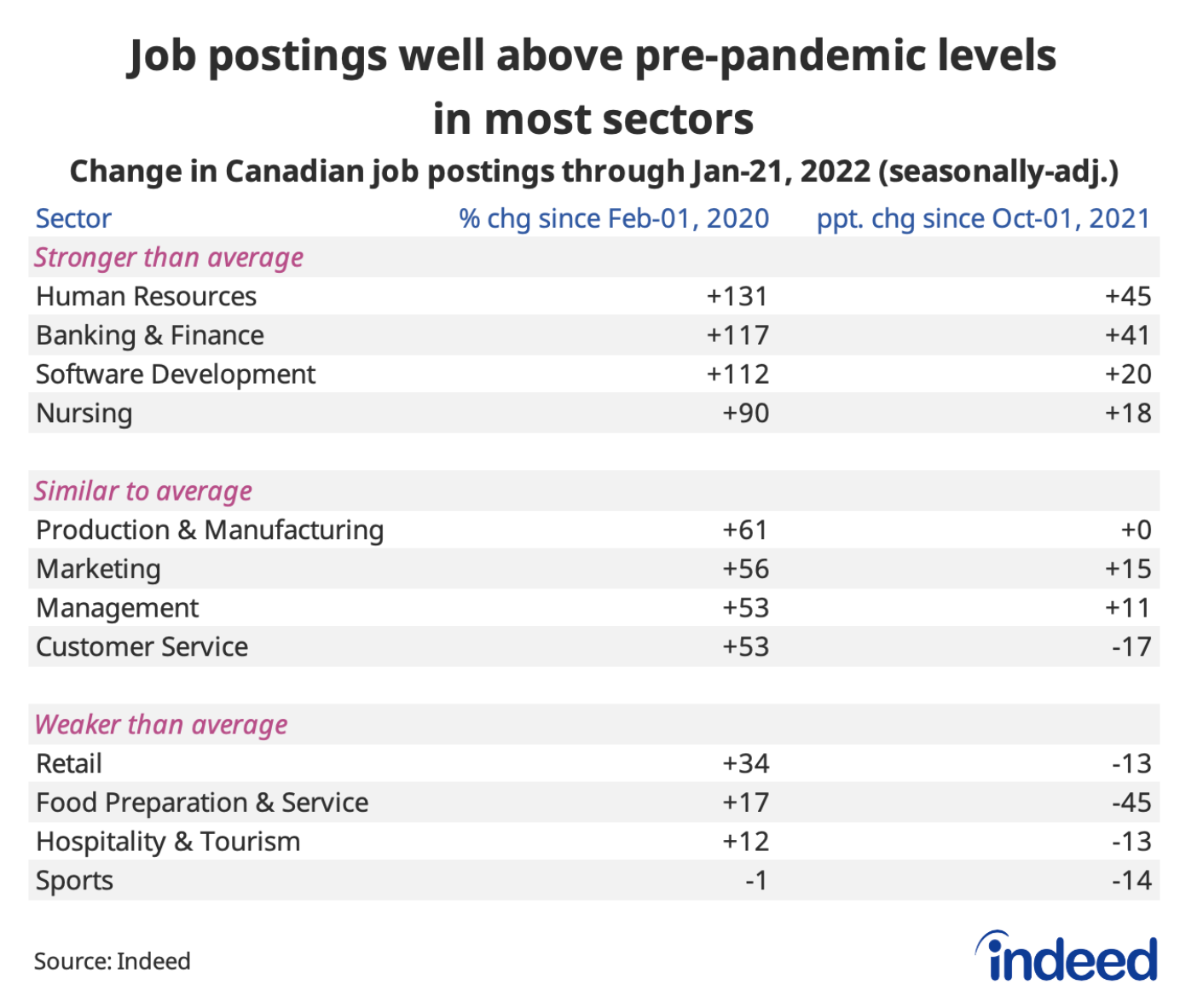
2022 brings relative gains across Canada

This article was produced in partnership with Indeed.
Throughout 2021, across Canada and the U.S., labour markets have experienced major shifts. While there are notable similarities between the two countries' employment trends, some of these shifts are distinct to each country.
In the workplaces of both countries, the pandemic and measures put in place to mitigate its spread have caused severe work-related burnout. Experts link this burnout and employees’ coping mechanisms to several factors outside of the workplace. These include strained relationships, adverse health issues, and fatigue.
However, there’s a broader, deeper pandemic spillover effect. Across country borders, types of roles, industries, and rates of pay, both job seekers and current employees are looking for more from their work and their workplace. More than higher pay, promotions, or perks, many workers are seeking employment that fulfills more subjective needs such as self-worth, purpose, and quality of life.
Jessica Jensen, chief marketing officer at Indeed, notes: “‘More broadly, we’re seeing people examine, ‘What am I willing to do for work and what do I need to get paid?’ Women and men — especially those who are newer to the workforce — are asking the question: ‘Am I paid enough to work this much or this hard?’ And perhaps more importantly: ‘Is this job making a positive difference in the world?’ People are talking about the Great Resignation, but I think it is more of a ‘Great Re-Evaluation.’”

Image credit: Stat CanCanadian labour market 2022 outlook: Canada is recovering faster – or is it?

According to the Canadian Labour Market findings by the Indeed Hiring Lab, as of November 2021, Canada’s labour market has recovered faster than the U.S. market. Canadian employment rates approached the end of 2021 closer to their pre-pandemic levels than United States employment levels did. This recovery was led by stronger rebounds across a range of mid- and high-paying industries.

Indeed compared the percent change in total Canadian job postings between February 1, 2020 and January 21, 2022, across various sectors divided into sections “Stronger than average,” “Similar to average.” and “Weaker than average.” Postings in some sectors are now well above where they were in early 2020, including software development, nursing, banking and finance, and human resources.
In professional and technical services, health care and social assistance, and construction industries have led the way for Canada’s relative rebound. However, Canada’s predominantly high-paying industry growth may translate to a disproportionate recovery that leaves lower-paying industries — and the people who work in them — at a disadvantage.
Interestingly, employment rates have increased among parents of young children more strongly in Canada than compared to the U.S. The share of Canadian mothers and fathers who were working was up 1.8 percentage points in November from its pre-pandemic level — while U.S. fathers’ employment rate remained down 0.8 percentage points, and mothers at a dramatically lower rate of -2.2 percentage points.
One trend that has likely aided the Canadian recovery is that workers of different demographics have been able to shift towards growing sectors. At the same time though, much like the U.S., employment in Canadian hospitality, and restaurant industries remain stalled, and jobs in these industries typically are filled by women. The “she-cession,” a term originated by Armine Yalnizyan, economist at the Atkinson Foundation in Toronto, has staying power across both labour markets.
However, there are two gains in the U.S. labour market that haven’t yet surfaced in Canada. Firstly, U.S. workers are switching jobs more frequently, while Canadian job switching was relatively subdued throughout the year. As a result, year-over-year wage growth stood at +4.6 per cent in the US in the third quarter, two percentage points higher than in Canada. Secondly, there’s one reversed trend: Canadian self-employment is dropping as the job market has recovered, while self-employment in the U.S. in 2022 is above pre-pandemic levels.
And, finally, it appears as if Canada has not yet experienced the “Great Re-Evaluation” as significantly as the U.S. While pressure is on for employers in both labour markets, U.S. companies felt it earlier in the pandemic. Canadian employers can seize this narrow window of opportunity to proactively address the related challenges already in full swing in the U.S. labour market.
Beyond these labour market trends, HR leaders are grappling with the “pandemic spillover effect” affecting the health and well-being of workers who are dealing with the many and ongoing challenges presented or intensified by COVID-19. In the U.S., many see the “Great Re-Evaluation” as a spillover effect of the pandemic and challenges in shifting to remote work. That’s why there’s an increased focus on wellbeing, especially given the demands of juggling work, childcare, schooling, and health monitoring, which falls disproportionately on women in the workforce. There’s little reason in current trends and data to expect that the spillover effect in Canada will be any less widespread.
Given that the “Great Re-Evaluation” has hit the U.S. earlier than Canada, employers will be well-served by looking at how U.S. employers are addressing increased and sustained rates of job switches and exits. Canadian companies may continue to lead the way in employment rates by leveraging learnings and focusing on work happiness.